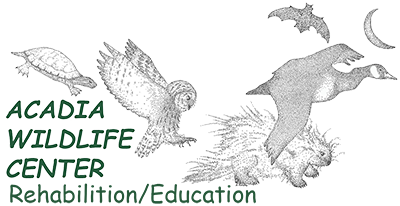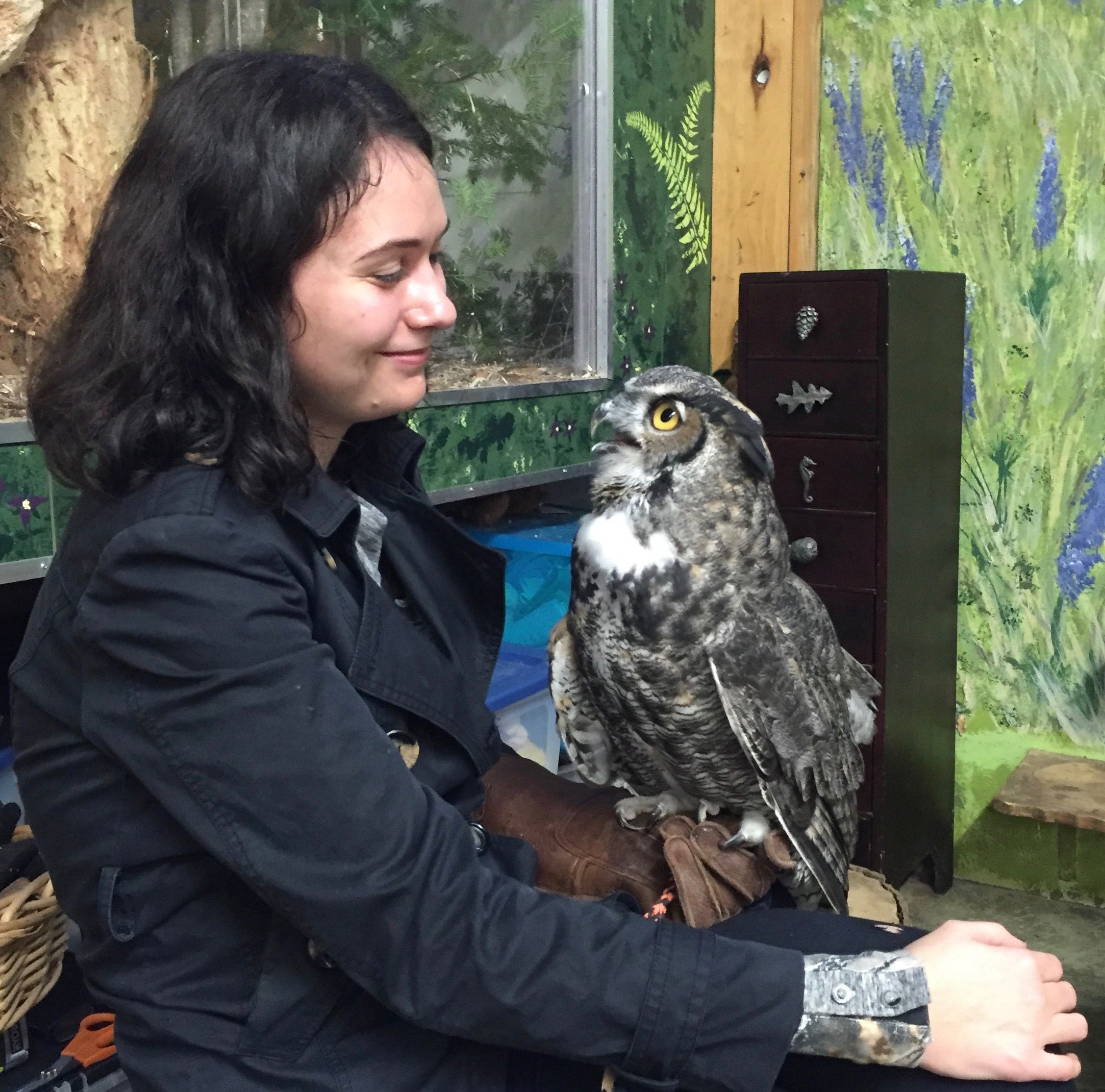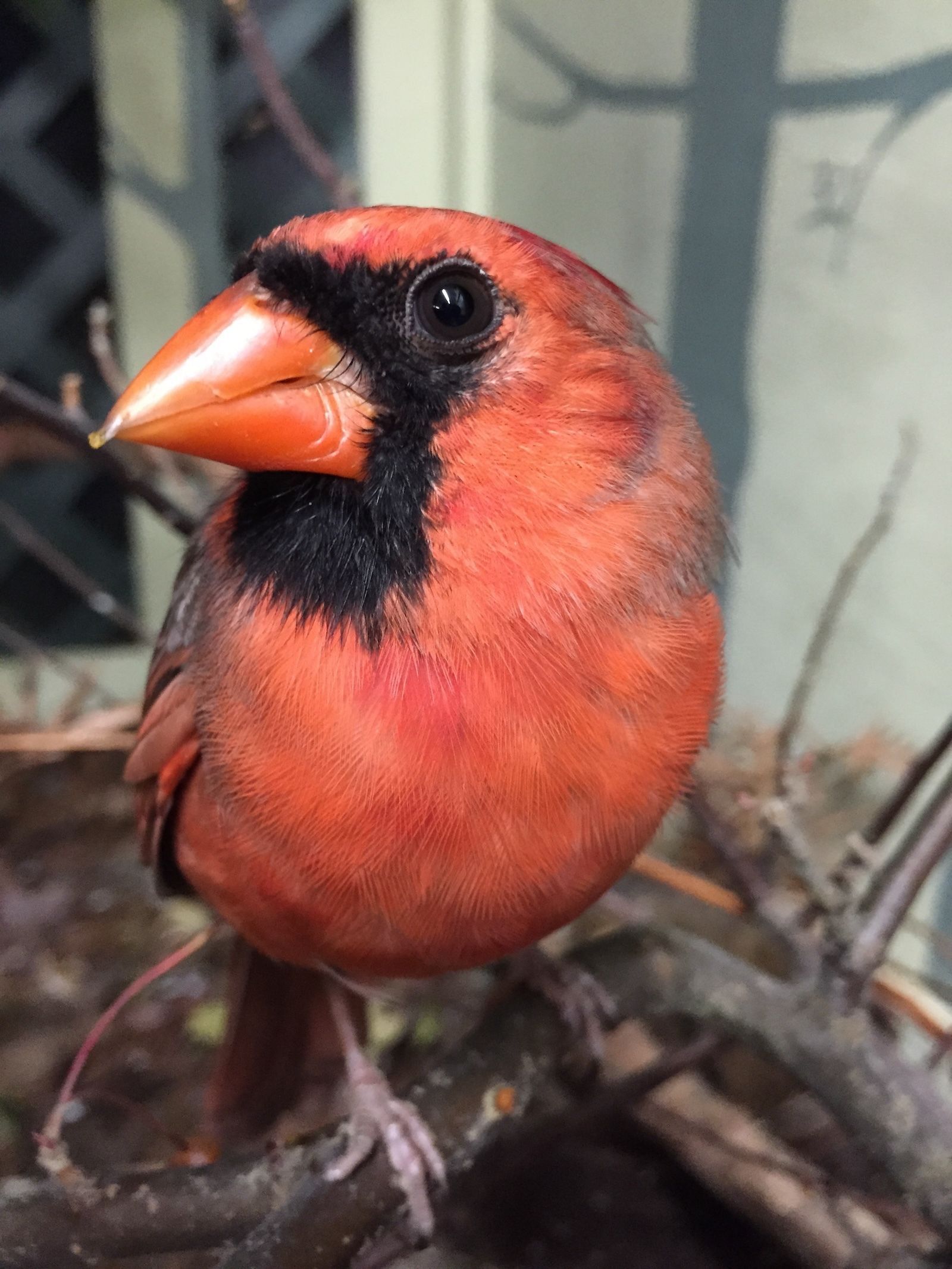
Louis was a much beloved Northern Cardinal who lived in our Nature Center for many years. He had a shoulder break and was transferred to us for education from another center. Because he was a juvenile when he came, he settled in very well and sang to us a lot of the time. Northern cardinals are year-round residents who mate for life and hold the same territory throughout their lives. They prefer open woods and gardens with good amounts of bramble and thicket, so we do not normally see them in the forests around Acadia Wildlife Center.

Cecil was a 45-pound Snapping Turtle. He was magnificent and gentle. He had been raised by a member of the public from hatchling size and got so big that they couldn’t handle him anymore. We housed him in as big a pool as we could fit in our Nature Center and took him out for frequent walks. His special person was Becca Bendure, a volunteer strong enough to lift him back to his pool. Snapping Turtles are wonderful prehistoric looking turtles who lie on the bottom of ponds and wait for food to float by. They rarely chase things down but there are stories of toes…They prefer a carnivorous diet but will eat just about anything. They are ancient beings first seen from the Pliocene Era, 2.5-5.5 million years ago, and they haven’t changed in form much since then. Cecil loved to have the top of his shell tickled.
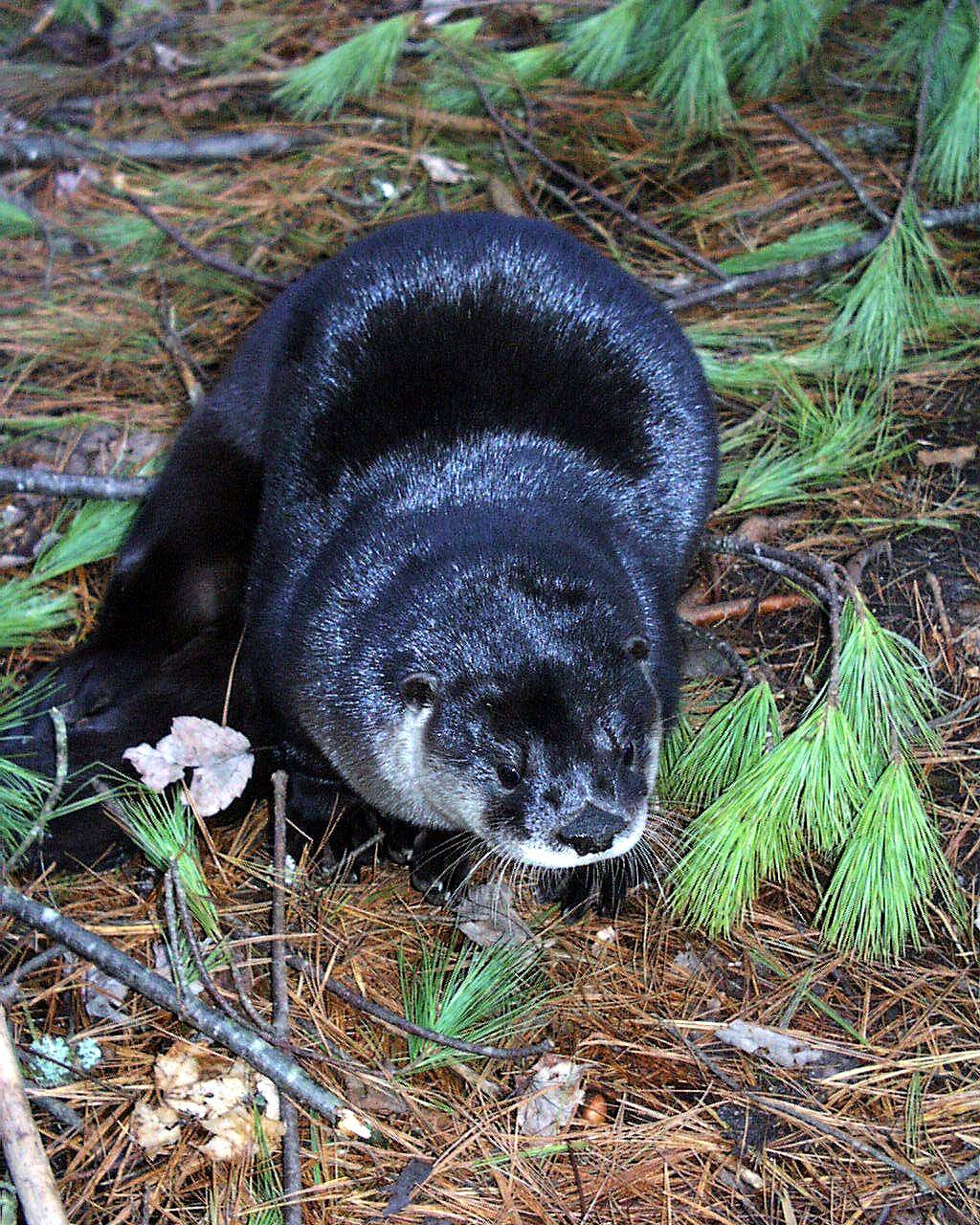
Maya was an otter that we got in when she was three days old. Her mother was carrying her across a road to a new den after flooding and was hit and killed by a car. A woman walking went to check if the mother needed help and when she turned her over, she found a tiny living baby in her mouth. The baby had a small cut on her head, so the woman took her to a vet for stitching, and the vet sent her here. She grew up normally until she opened her eyes. At that point I take baby otters outside, and they follow me, but Maya did not. When I took her to my vet, she was blind. The optic nerve has been damaged in the car hit and although her eyes worked perfectly, she could not see.
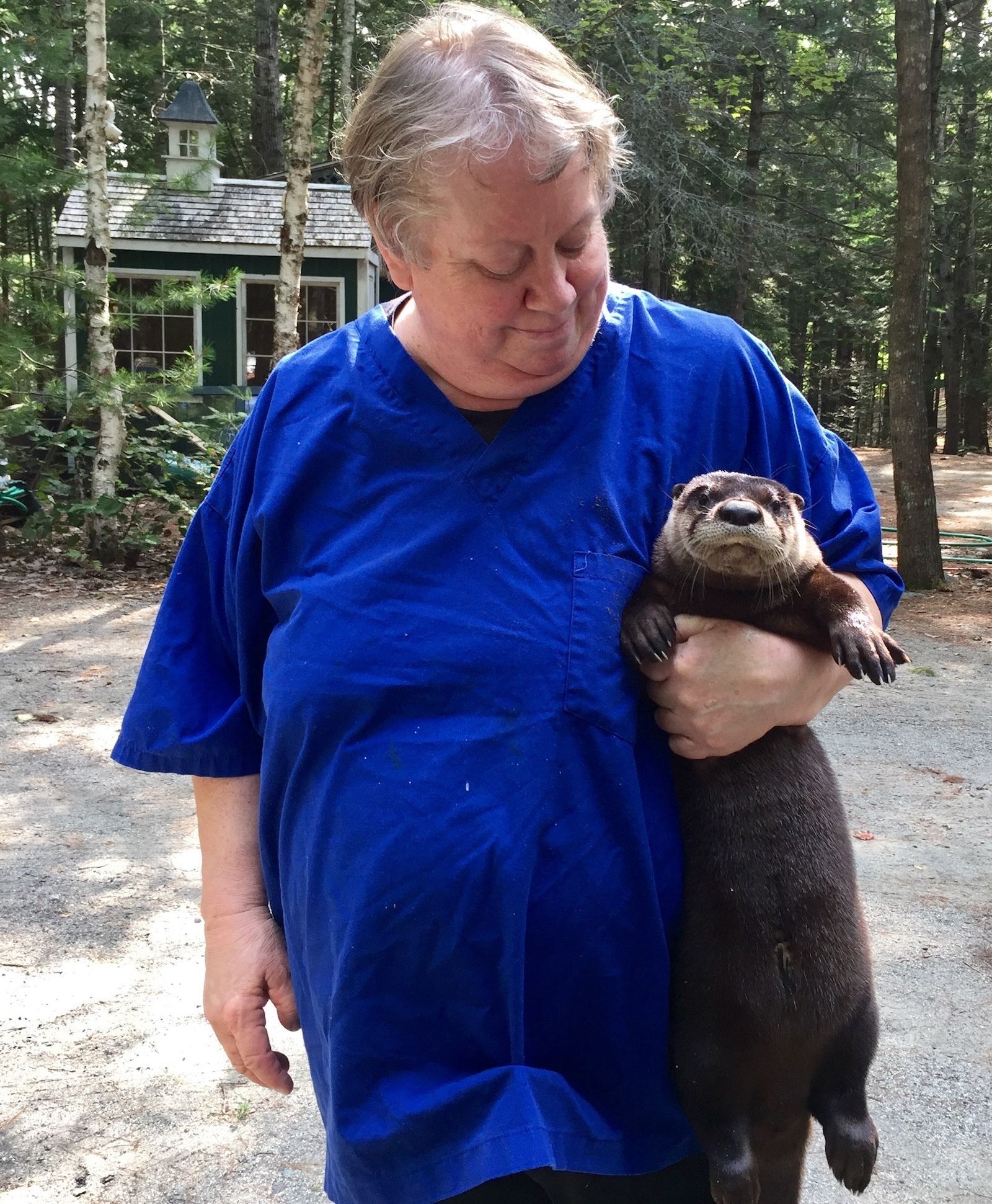
Maya was our education otter for five years. Like our bobcat, Liam, she had some seizure activity. But she was all otter, my favorite animal. She slid upside down, forwards, and backwards. We went sledding in the winter on the hill behind the clinic with me pushing her down the hill, then I would have to climbing down to bring her back up, and then repeat over and over again. I built her many little cubbies around the nature center for her to hide out in. Volunteers will still ask me what these weird little spaces are for. She loved playing nose soccer with golf balls. She could hear them and chase them then pushing them all around with her nose. Otters are powerhouses.
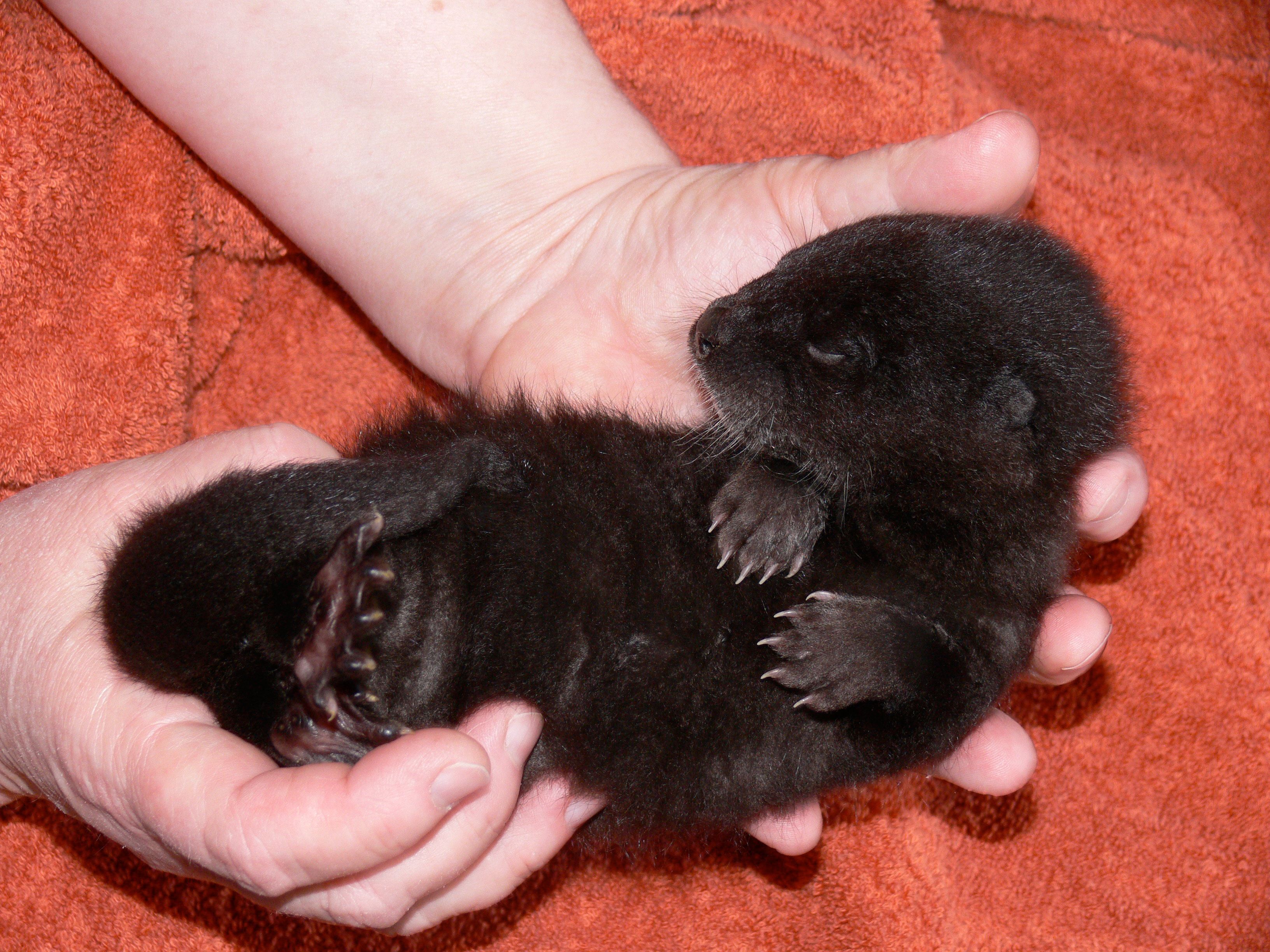
She was constantly on the move except for nap time, when she slept so deeply that I could push her, and she didn’t wake up. They are so good at fishing that they have time left over to play as adults. They travel overland a lot moving from fishing spot to fishing spot. Maya was totally endearing and taught many people what it means to be otter.
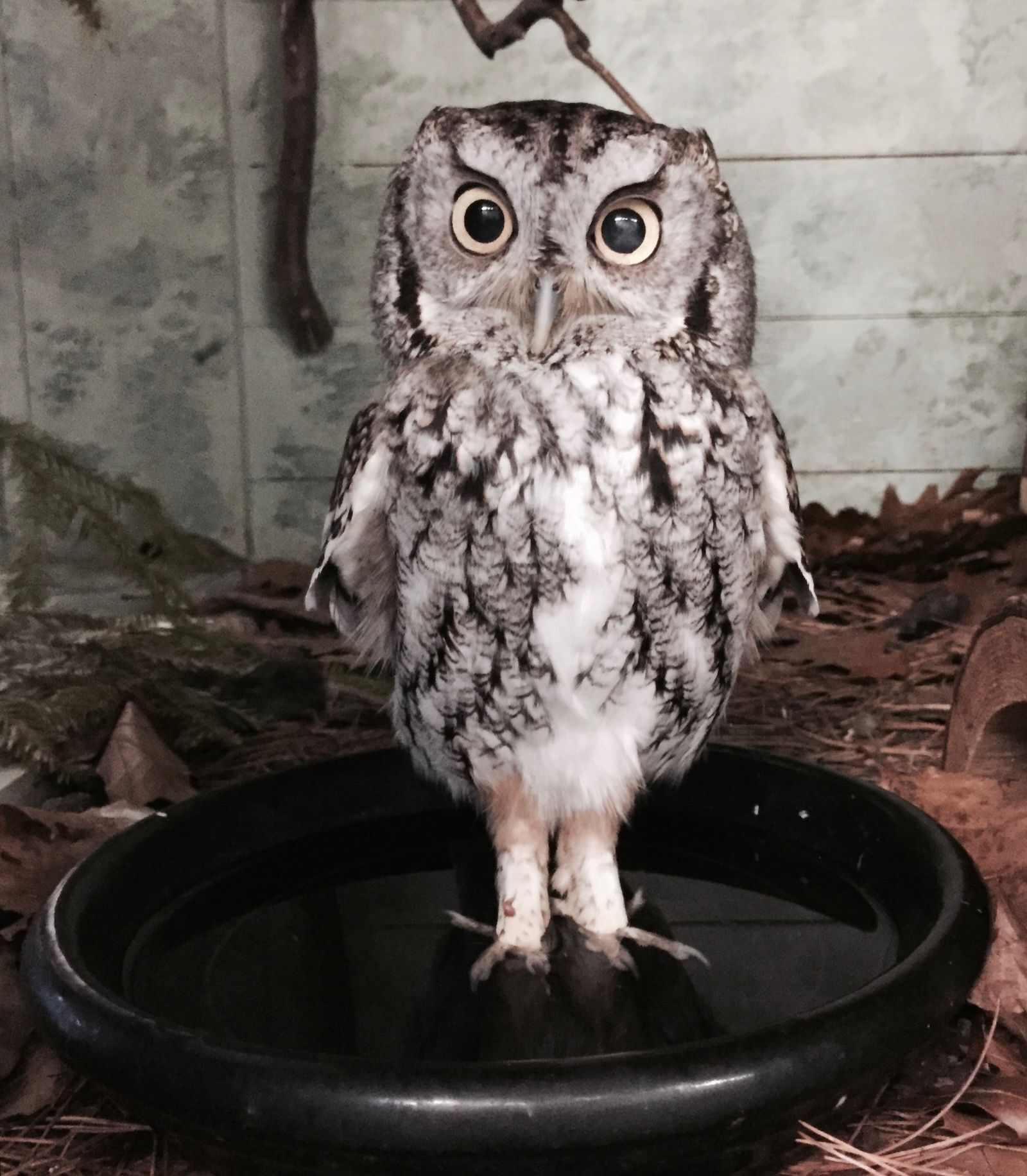
We had two Screech Owls who passed away during the pandemic, The Red one was called Abbey and had visited the Raptor Trust in New Jersey twice as a patient. She had been banded (a government aluminum numbered band that is put on birds to identify individuals) on her first visit so we had a pretty good idea that she was in her thirties when she died, very old. Our Grey Screech was called Libby, and she came from Connecticut. The colors, which also include a brown morph, are random occurring across their range. Both Abbey and Libby had lost an eye in a car hit and would run into things when they flew. They are not a species that we get in Maine but are in Massachusetts. They are bigger than our Saw-whets but not by much so have to worry about predation from bigger raptors. Their plumage gives them the advantage of blending in with old wood where they like to live. We miss ours very much. Abbey especially like to talk to us a lot.
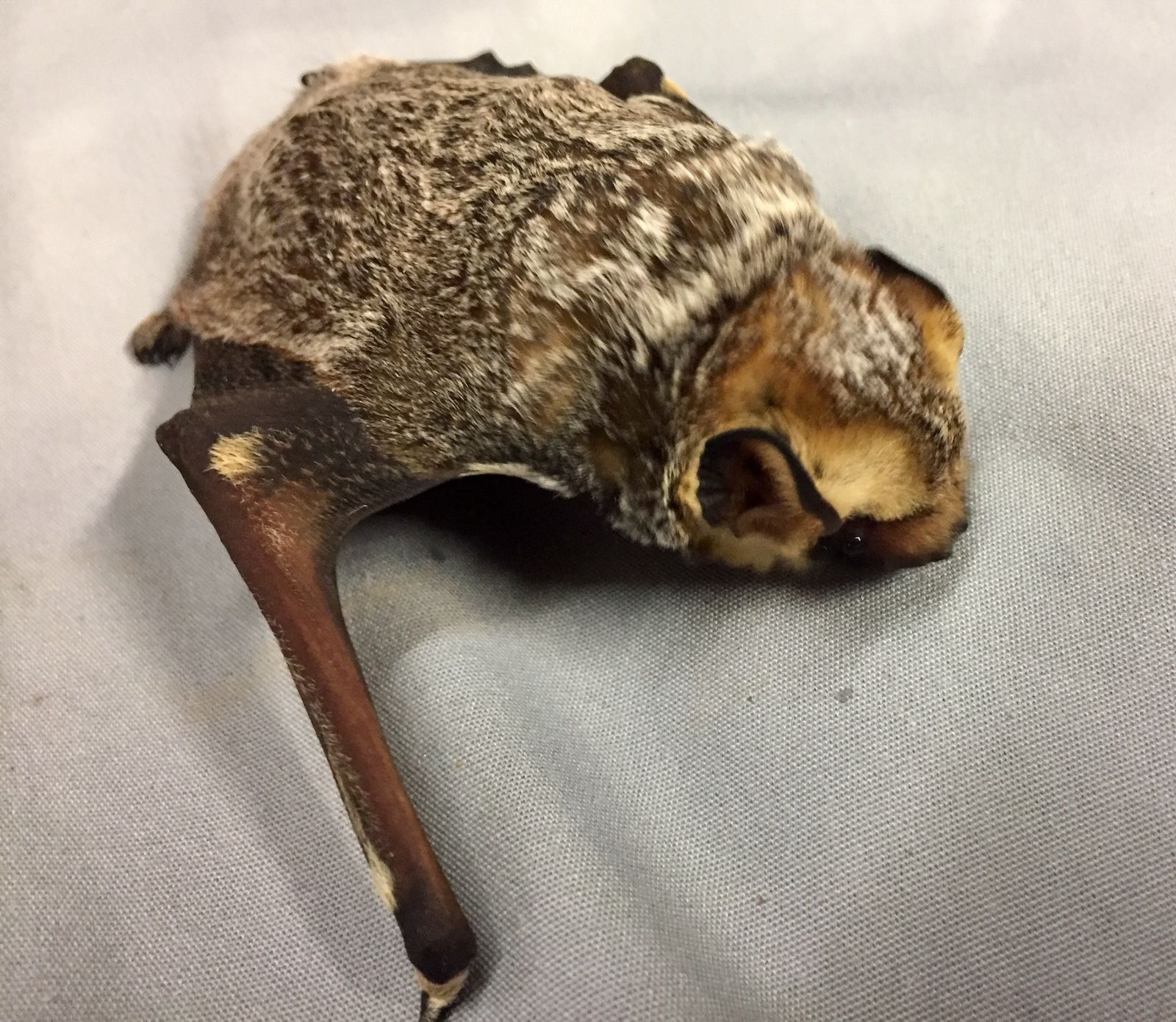
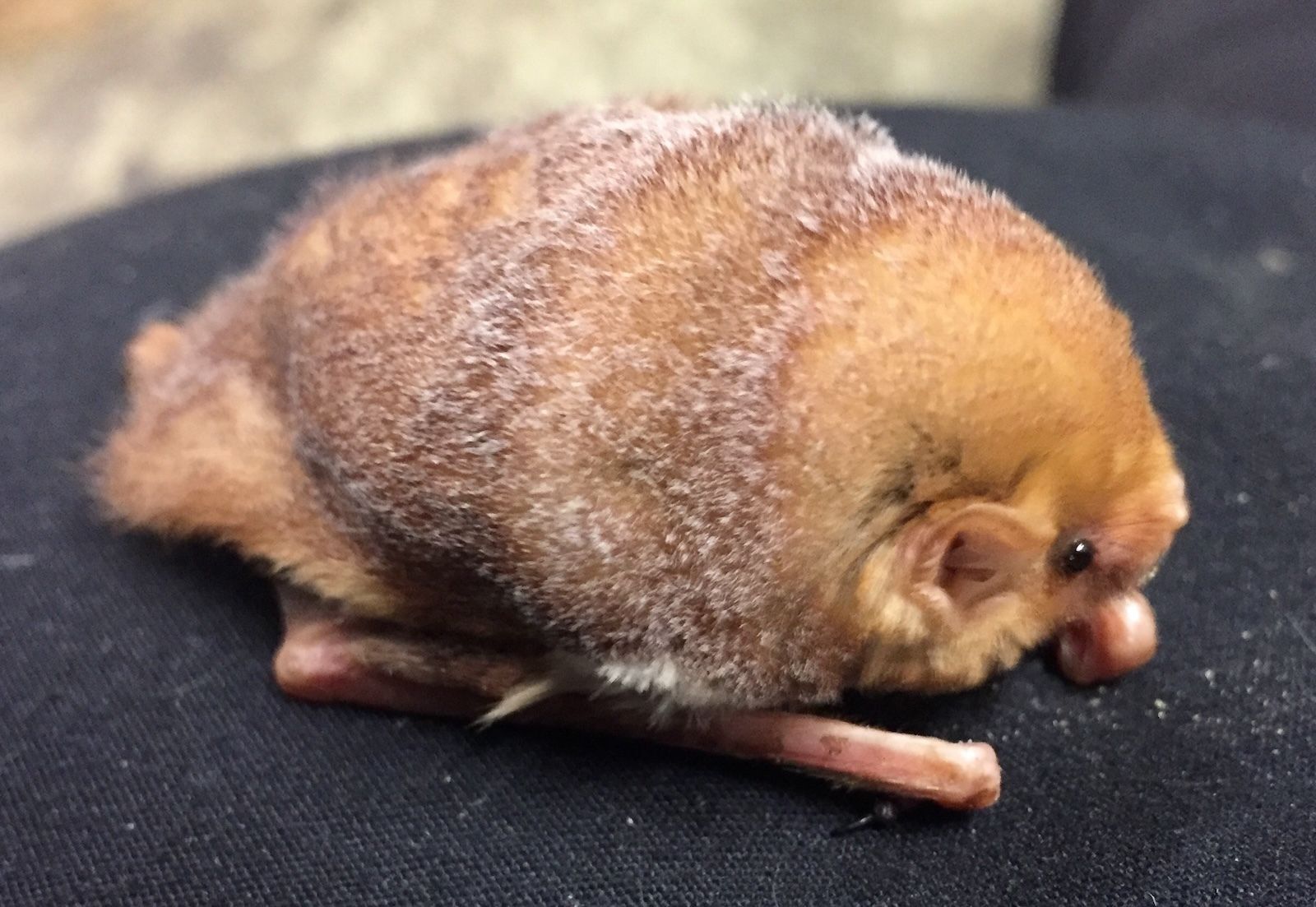
These two species of bats are called tree bats. The first one is a Hoary Bat we called Hazel, and the second one is a Red Bat we called Red. They are quite different from the group we call crevice bats; Big Brown, Little Brown, Tri-colored, and Small-footed which hibernate here and are dark colored. Other tree dwelling species include Silver-haired, and Long-eared. Hoarys and Reds migrate south where they are active for much of the winter. If they get cold, they use their furry tails and wings to wrap themselves up, tuck themselves under a piece of bark, and go into torpor, a short-term hibernation-like state. Unlike the crevice bats they are brightly colored to blend in with bark and leaves from which they hang. They have not been affected as yet by White-nose Syndrome since the fungus that causes White nose likes cool damp caves. The biggest threats to Reds and Hoarys are habitat loss and wind farms. We rarely get them into the clinic because they have little interaction with people who might find them if they are in trouble. Hazel had a broken wing and was found on a golf course. Red had a long-term concussion and was found hanging very low in a public garden. None of the state’s bats are numerous. Most are threatened or endangered due to the mortality from White Nose. 99% of Little Brown Bats, once our most numerous species, are gone and complete extinction is right around the corner. We must pay attention!
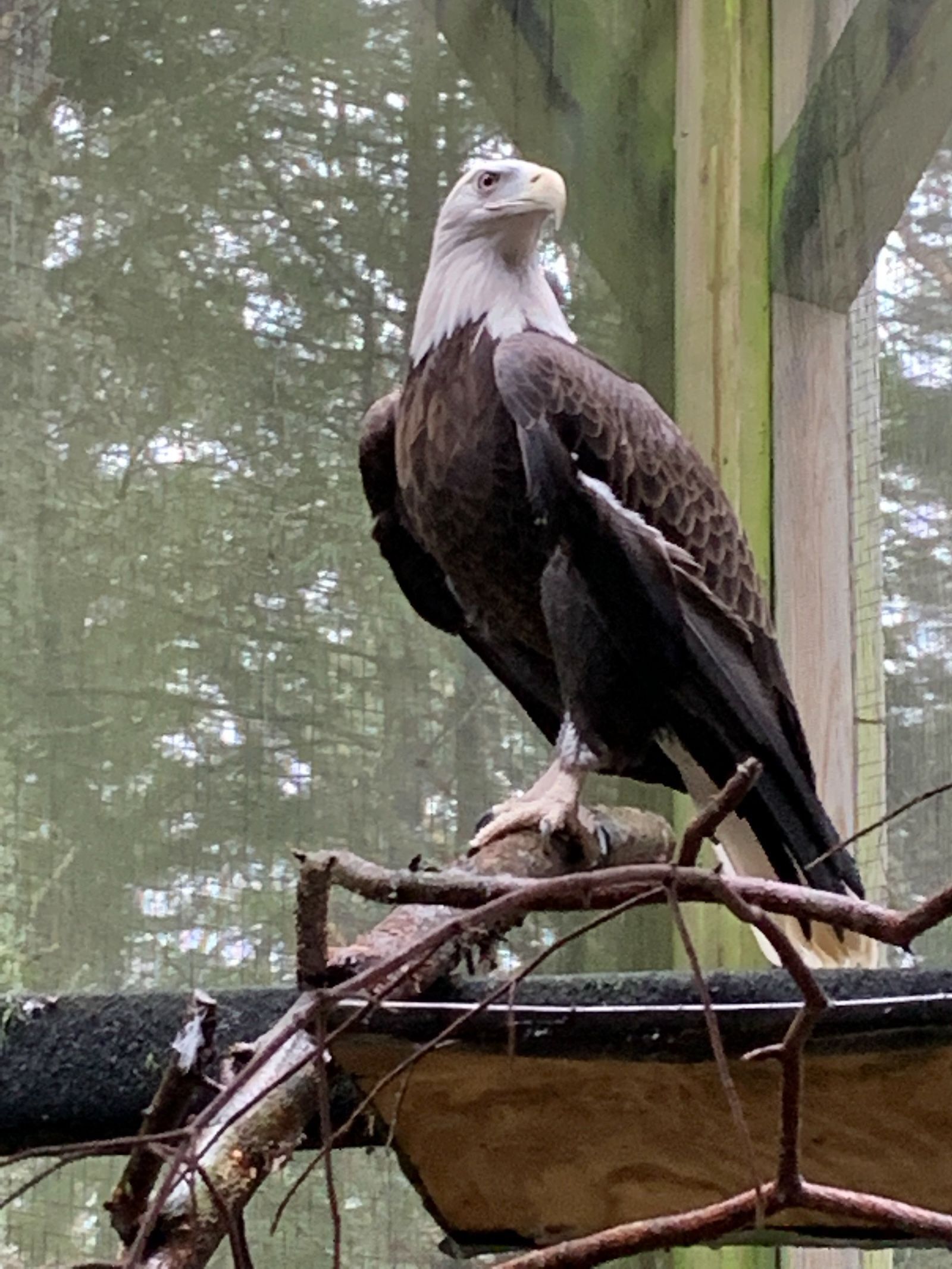
Luke was our first Bald Eagle ambassador and lived with us for 13 years. He was an adult when he was caught in a leg hold trap at a poached deer dump. It was a legal case with the man responsible caught and fined. Luke was caught in the trap by his wrist, and it caused great damage to that area. The finger bones on a bird are reduced in size from ours, but several of his were broken. There was also a huge chunk of tendon and tissue torn from his wrist. This whole area on a bird has little muscle to cover the very important components of the wrist, and all of the primary or flight feathers grow from this small area. The feathers grow out of the edge of the wrist and must be dropped or molted each year and then regrown. I worked on him all winter, trying to heal the broken bones and torn tissue. We did a lot of physical therapy working the joint. Extending a wing on an eagle is quite an experience- they are huge. He of course, was not happy with the handling or the pain. Many of the bigger rehab centers have the capability to put a bird under sedation while working a frozen joint, but we were on our own. In the end he could fly, but not well enough for release.
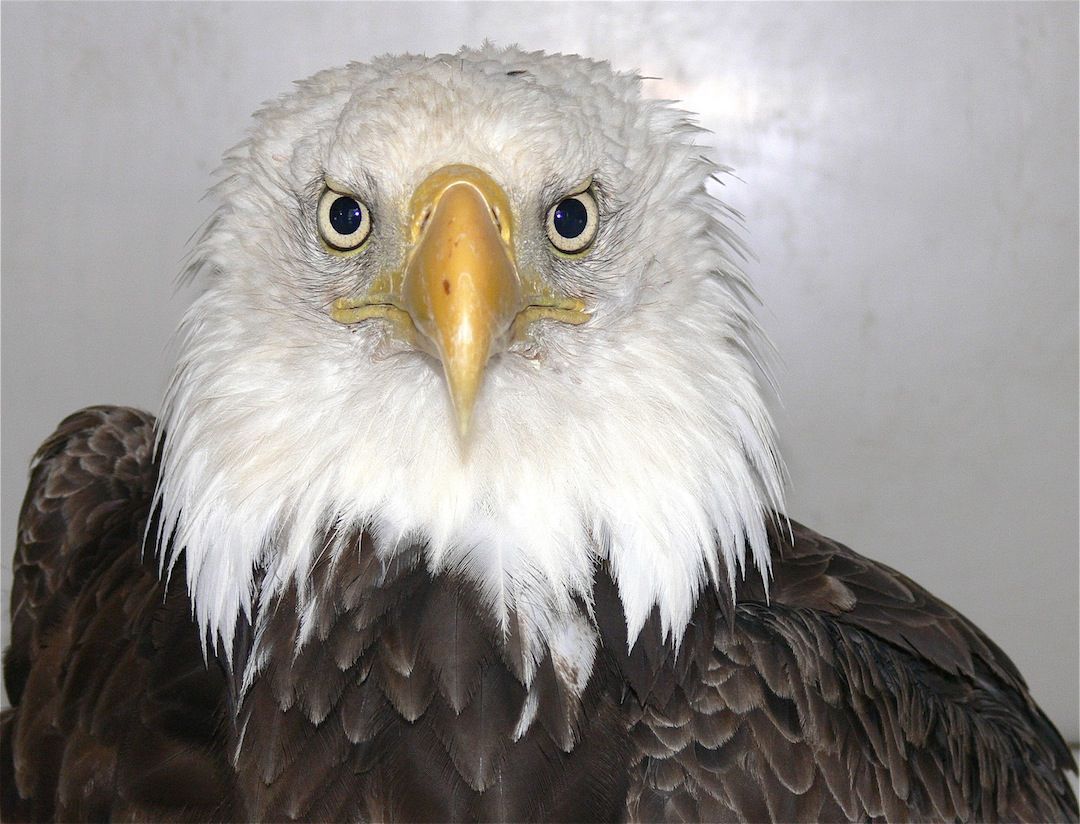
He was a wonderful bird and got along with everyone. We used him as a foster dad to youngsters, and company for recovering adults. He liked them all. My favorite memory was one year when we had two babies that had made bad landings when they fledged and needed care. One was a female. We put them in with him and the female immediately flew up and sat next to him. As with all female raptors, she was enormous, at least a head taller than him. He looked up at her with such a look! I then put out three enormous dishes of food, spread out so all could partake without competition. I peeked out a moment later; the dishes were empty; the female was sitting on the ground looking dazed; the young male and Luke had not moved.
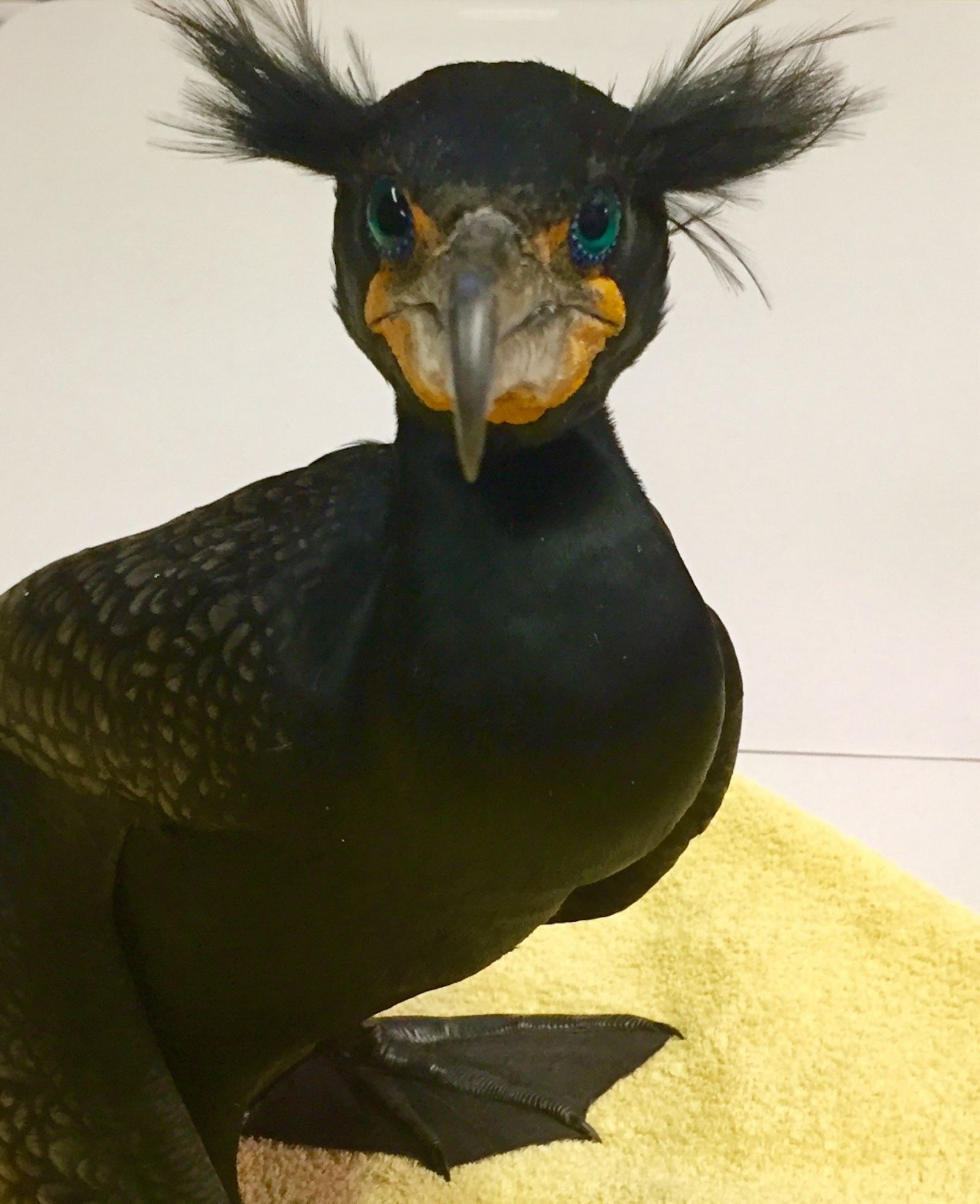
Jake, a Double-crested Cormorant, was one of our first ambassadors. He had one wing that was partially shot off. Many fishermen do not like cormorants and blame them for decreased numbers of fish. But Jake was a determined fellow. He walked and walked inland until he came to a police station (coincidence?). He tapped his bill on the glass until he got their attention. He was sent to a rehab center in whatever state it was (It’s been so long I’ve forgotten). Of course there was nothing they could do for him. But still, what a character. So, the rehabbers set about trying to find an education placement for him. But who would want a cormorant? That was back in the day when raptors were all the rage. Finally, one of my southern colleagues gave them my phone number and said, “she’s just crazy enough to take him”. And I was. Who knew how great Cormorants were? He lived with us when we were very small and made do with tubs of water. He basked in the sun with his wings stretched out, perching on whatever was available. And yes, when he was hungry, he tapped on the glass door of his enclosure. He was just great.
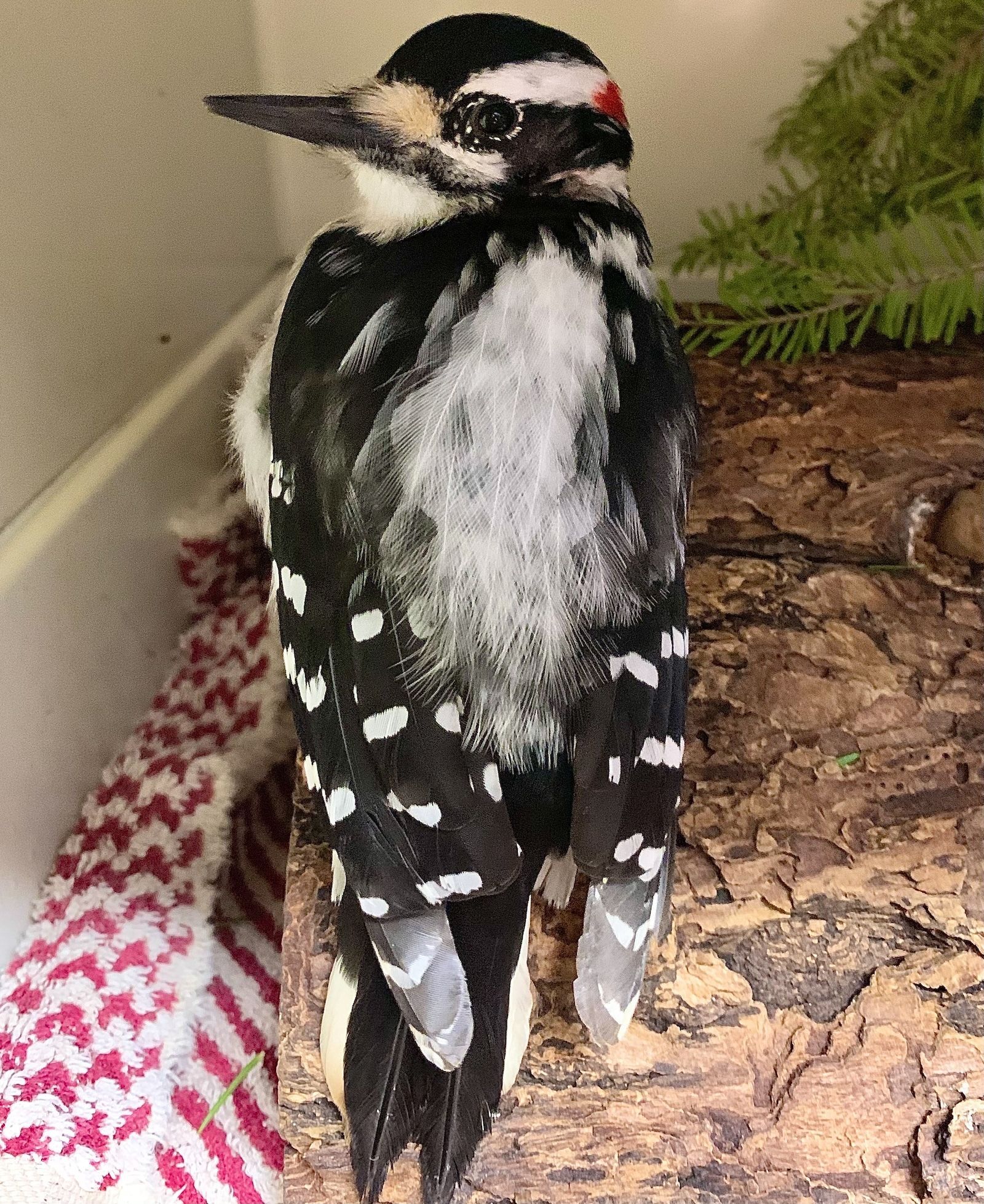
William was a wonderful male Hairy Woodpecker who got hit by a car as a fledgling. One of his coracoids (the bone that attaches the shoulder to the keel and gives upward lift) was broken and mended poorly. Hairy’s have immense capacity for destruction and took apart two display cages before we finally built him one of plastic decking and plexiglass. He still put a hole through the plastic decking. He lived alone for many years until one day we received a fledgling Downey Woodpecker with the same injury. I don’t normally put ambassadors of different species together, but we thought we would try it. William had never grown up outside, never had a mate or been a father. He immediately lined up a bunch of meal worms in his beak and went to her to feed her. She was shy at first, but learned the routine and for the rest of their lives she would call to him and he would feed her.
These are just a few of the amazing animals I have shared my life with. It’s been an honor.
